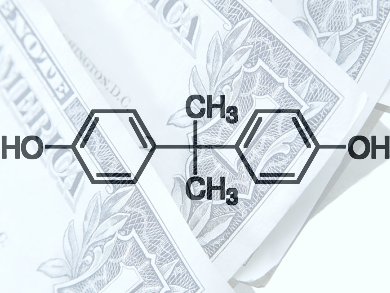Bisphenol A (2,2-bis(4-hydroxyphenyl)propane; BPA) is used mainly in the production of polycarbonate plastics and epoxy resins. It has frequently been detected in environmental matrices, including air, water, sewage sludge, soil, dust, foodstuffs, and drinks as well as in human samples. Studies indicate that BPA acts as an endocrine disruptor, it mimics the action of estrogen. Exposure to BPA has been linked to a variety of health problems. Diet has been considered the major source of human exposure, additionally, inhalation and dermal routes are presumed to be important sources of exposure.
Chunyang Liao and Kurunthachalam Kannan analyzed paper currencies from 21 countries (N = 156) for BPA, which was measured in 19 mm punches taken from three spots on the paper currencies. All currencies contained traces of BPA.
Contact of paper currencies with thermal receipt papers is considered a major source of BPA contamination. BPA is used as a component in the production of thermal papers as a weakly acidic color developer and has been detected in thermal paper at extremely high levels of up to 3–22 g/kg.
The amounts of BPA on all currencies are higher than in house dust, but human intake from currency is at least 10 times less than those from house dust.
- High Levels of Bisphenol A in Paper Currencies from Several Countries, and Implications for Dermal Exposure,
Chunyang Liao, Kurunthachalam Kannan,
Environm. Sci. Technol. 2011.
DOI: 10.1021/es200977t




